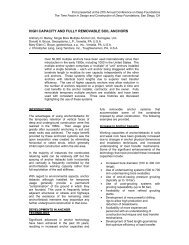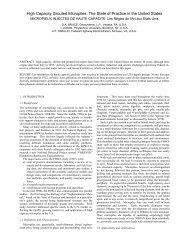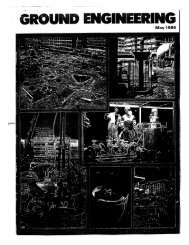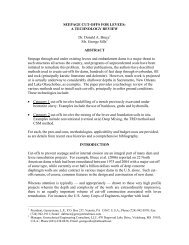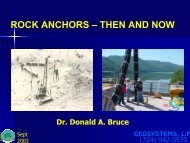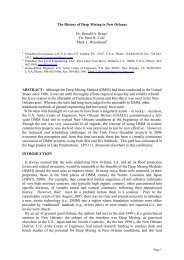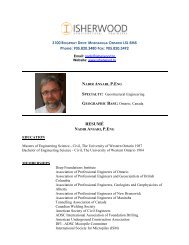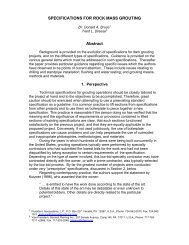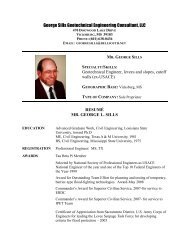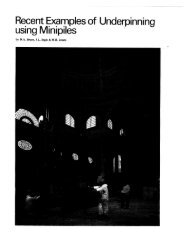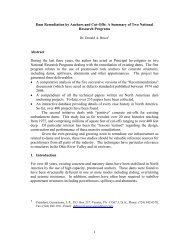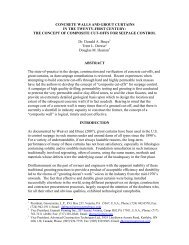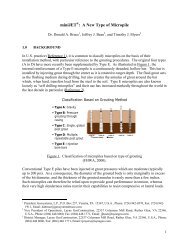Design, Construction and Performance of ... - Geosystems, LP
Design, Construction and Performance of ... - Geosystems, LP
Design, Construction and Performance of ... - Geosystems, LP
You also want an ePaper? Increase the reach of your titles
YUMPU automatically turns print PDFs into web optimized ePapers that Google loves.
The two-row grout curtain featured holes drilled 15º <strong>of</strong>f vertical in order to ensure<br />
that vertical joints were intersected (Figure 2). <strong>Construction</strong> began with the coring <strong>of</strong> 34<br />
“superprimaries” to further explore the foundation. These holes were subject to<br />
geophysical logging, optical televiewing <strong>and</strong> multipressure Lugeon testing, prior to<br />
grouting. Thereafter, the intermediate Primaries, Secondaries <strong>and</strong> Tertiaries (where<br />
deemed necessary) were drilled with rotary percussion <strong>and</strong> water flush. A Drilling<br />
Parameter Recorder was used to record the drilling characteristics <strong>of</strong> each hole, thereby<br />
contributing greatly to the pool <strong>of</strong> knowledge on the variability <strong>of</strong> the rock mass, both<br />
laterally <strong>and</strong> vertically.<br />
Photograph 1. Irregular packstone surface detected in seismic refraction survey.<br />
Photograph 2. Weathered zones mapped in Bangor Shale Unit C beneath historic Bear Creek<br />
channel.<br />
Photograph 3. Cherty limestone <strong>and</strong> packstone contact.<br />
Photograph 4. Cleaning <strong>of</strong> N30E features.<br />
28



